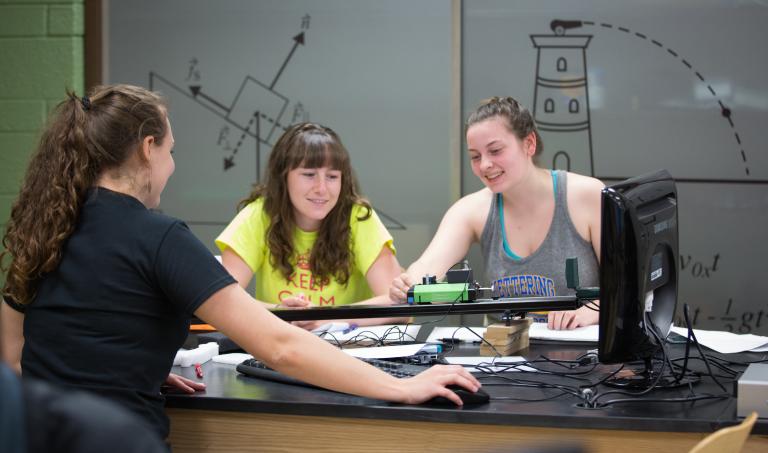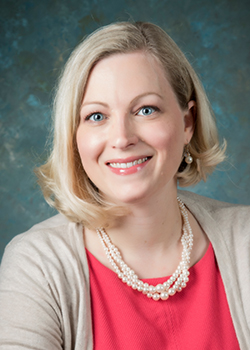
“It allows more freedom in research, logging in remotely to the server. It allows more research and quicker research to be done, allowing for more results and a bigger impact.”
Dr. Gillian Lynn Ryan, Physics faculty member at Kettering University, along with collaborators from multiple disciplines across campus, have been awarded a National Science Foundation - Major Research Instrumentation (NSF-MRI) grant for $395,975.
The grant allows Ryan to acquire a centralized High Performance Computing (HPC) resource called the Kettering University High Performance Computing cluster (KUHPC). KUHPC will provide capabilities to Kettering University to facilitate both computation- and data-intensive research on campus.
The award is Kettering’s 11th NSF-MRI award since 2012, which is the most of any higher education institution in the state of Michigan during that time.
KUHPC will enable a growing number of multi-disciplinary faculty at Kettering who use computational tools in their research. The project team represents nine different research groups across a broad range of STEM disciplines that will immediately benefit from the acquisition of the HPC resource.
“We are excited about receiving the NSF-MRI grant to purchase this equipment. Computation is an essential tool in STEM research. The project team and I hope that this resource will not only support current projects, but lead to an increase in interdisciplinary computational work at Kettering,” said Ryan, principal investigator on the grant. “The KUHPC will be a dedicated resource for our faculty, so that they have the tools required to conduct their best research possible on our campus. Access to the cluster will allow faculty to complete research in less time, and also allow us to tackle more complicated problems than are currently possible.”

Co-principal investigators include Dr. Matthew Causley, Applied Mathematics; Dr. Salomon Turgman-Cohen, Chemical Engineering; Dr. Jim Cohen, Applied Biology; and Dr. Farnaz Ghazi Nezami, Industrial Engineering.
The new equipment will be helpful in many ongoing research projects already happening at Kettering, Ryan said.
For Ryan’s research, she studies pattern formation inside cells, looking at how proteins assemble and organize within the cell. That type of model is stochastic, involving randomness. Because of that, she would need to run the same scenarios many times to get an average behavior.
“If a single simulation runs three or four hours and I need to run 100 trials, that takes a long time, which isn’t practical on a desktop computer. Having access to a cluster means I am able to run many calculations at once, cutting the wait time for results,” Ryan said. “Other researchers may also speed up their work by running simulations in parallel. For this approach, individual simulations are broken into smaller pieces, which are assigned to different processors within the cluster. The cluster then brings all the pieces running separately back together for analysis. It’s a divide and conquer approach. Being able to do either of those things speeds up our work. The faster we are able to get results, the faster we are able to move forward with our research.”
There are many applications where time becomes a factor. For example, Nezami studies energy optimization in industry. If researchers are using a certain factory as a case study, they want to be timely when presenting their report.
One key component of having the KUHPC is using it for teaching opportunities. The project team is committed to using this resource in their classes, also allowing undergraduate students access to it for projects and research opportunities. Access to an HPC resource will provide students the opportunity to work with more accurate and complex computational models than are currently possible.
“Many Kettering students use computer simulation and numerical calculations in their co-ops, and some of those students are already using clusters,” Ryan said. “Computational research techniques and tools are essential for state-of-the-art work in multiple STEM fields. We need to train our students to be competent users of this type of equipment.”
The new equipment will allow researchers using it to login from anywhere. They can be in their office, anywhere on campus or off campus.
“That’s what is so beautiful about a piece of equipment like this,” Ryan said. “It allows more freedom in research, logging in remotely to the server. It allows more research and quicker research to be done, allowing for more results and a bigger impact.”